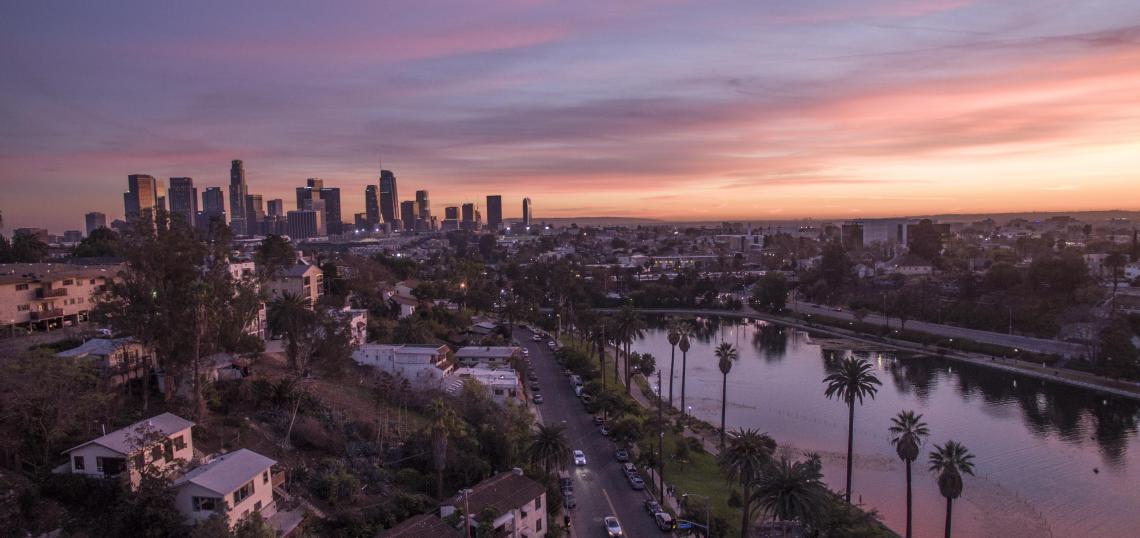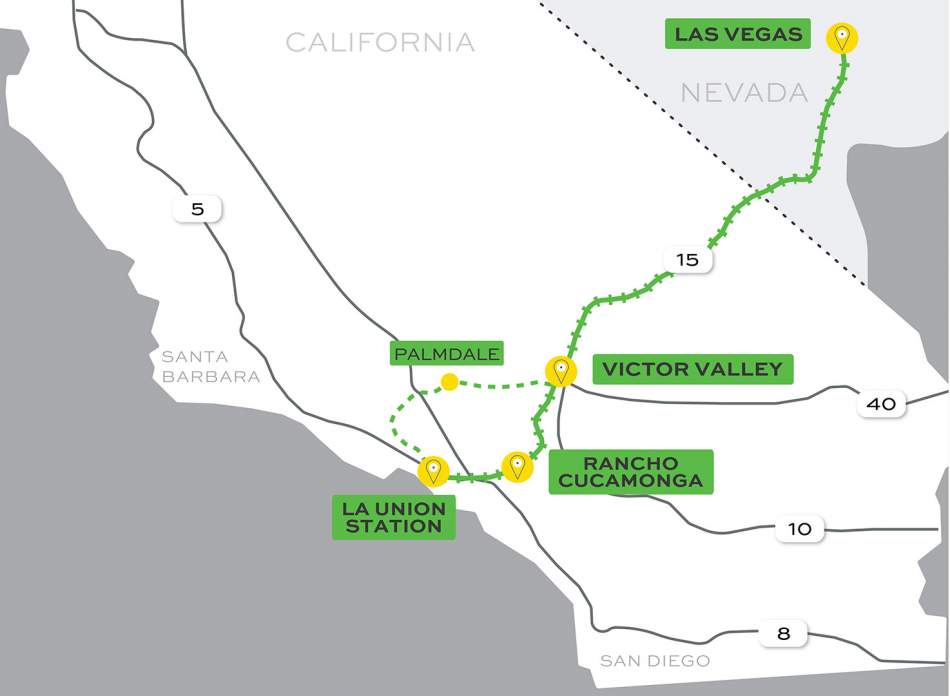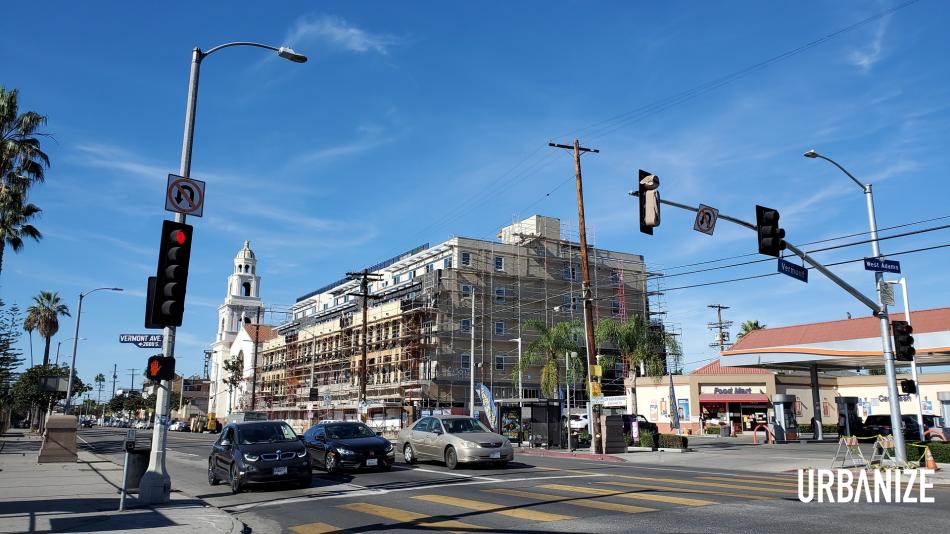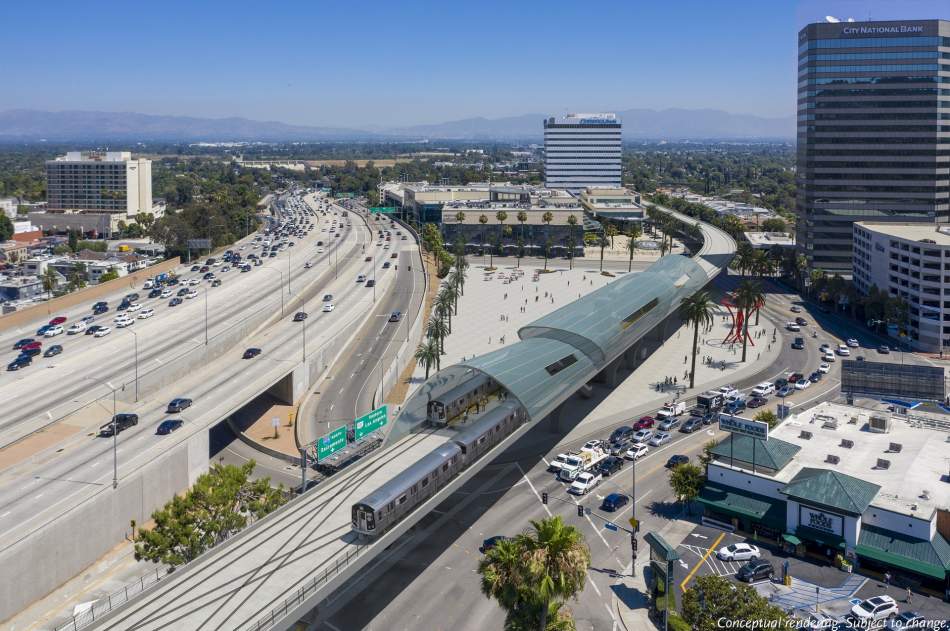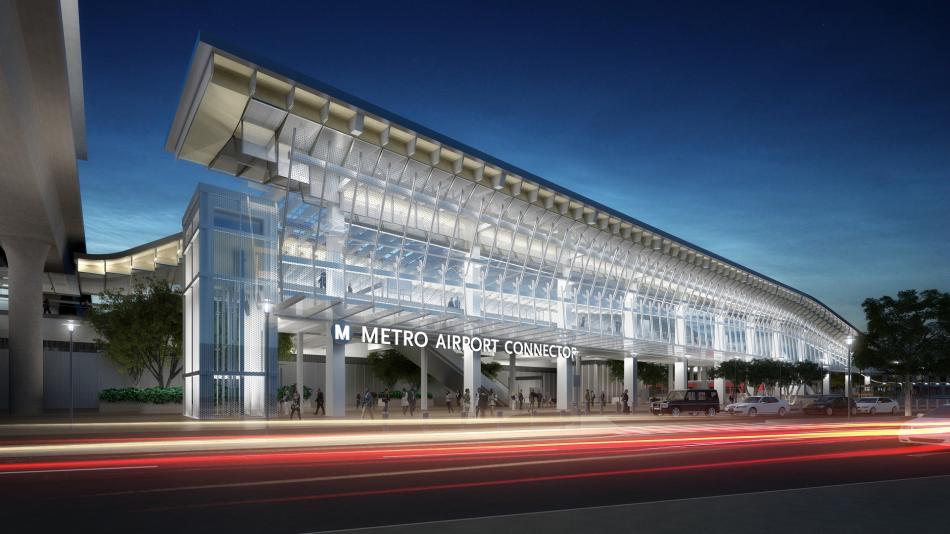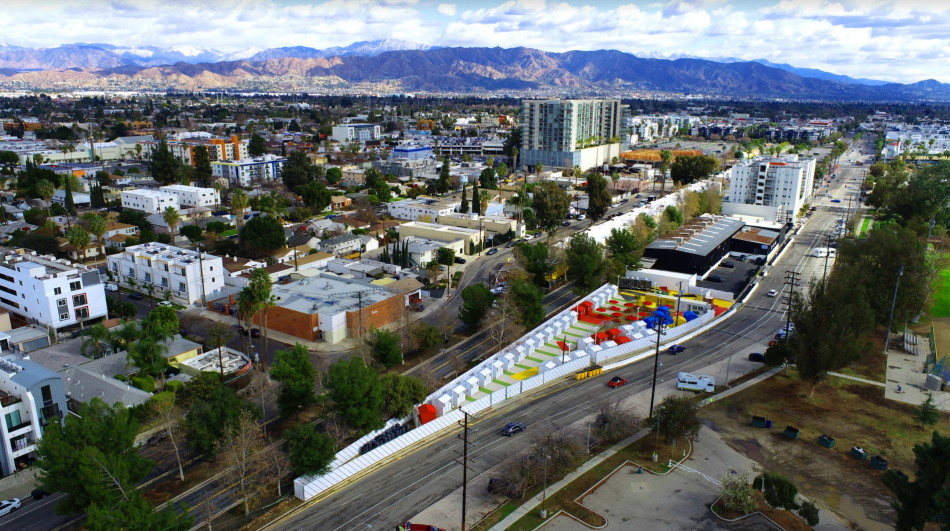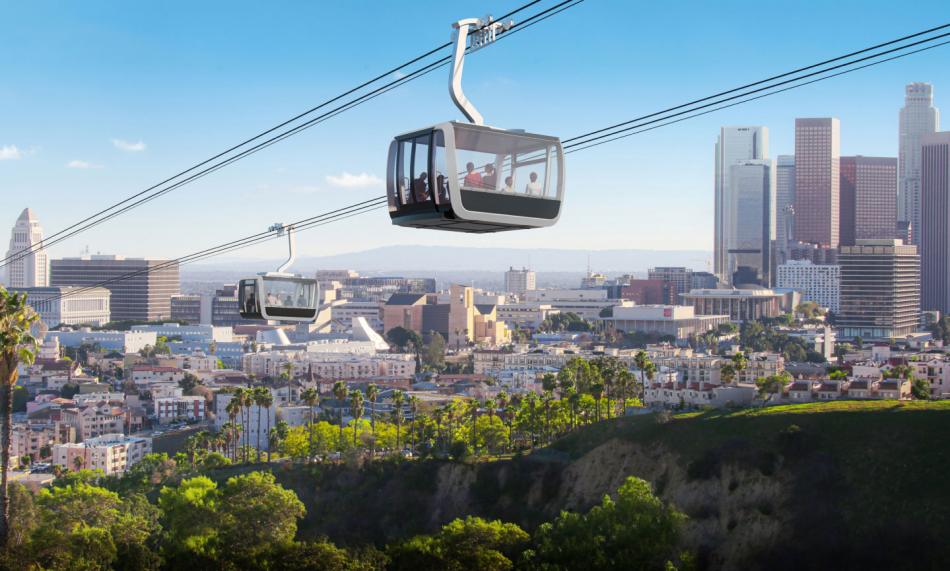This past year has been one of growth for Urbanize, with the launch of new sister sites covering Atlanta, Austin, Chicago, Detroit, and New York City (and Suburbanize LA, if you don't check the publication date). But confining ourselves to our hometown of Los Angeles, it's time to once again take a look back on the 365 days that have elapsed. Here's a look at our biggest stories of 2021.
Vegas-to-not-quite-LA high-speed rail line has a false start
With much fanfare, Brightline West, a subsidiary of New York-based Fortress Investment Group, announced in April that it would break ground before year's end on a 170-mile electrified rail line running from a station near the Las Vegas Strip to the unincorporated Apple Valley community in San Bernardino County. And within a matter of months, the project's backers - citing the pandemic's impacts on a potential private activity bond offering - pushed that schedule back to next year. Will 2022, with new money available thanks to the federal infrastructure bill, finally be the year that the long-awaited train gets on track?
L.A. may curtail the use of wood-frame construction
Even as the new California Building Code expanded the possibilities for mass timber construction statewide, Los Angeles officials seem inclined to go the opposite direction. The City Council is considering a proposal backed by the National Ready Mixed Concrete Association would expand of Fire District 1 - an area which currently encompasses commercial hubs and neighborhoods with older buildings such as Downtown, Century City, Hollywood, and Koreatown. While that may seem innocuous enough on the surface, the end effect would be new limits on wood-frame construction for all projects in that area consisting of at least 150,000 square feet of floor area, or as little as 100,000 square feet of floor area if the building would be more than 30 feet in height. The proposal has faced opposition from rival trade groups, as well as the advocacy organization Abundant Housing. Likewise, several Councilmembers have expressed skepticism at new rules limiting lower-cost wood-frame construction in the face of a regional housing shortage.
Inglewood's second downtown starts to take shape
Anyone who has landed at LAX over the past five years has undoubtedly gotten a glimpse of SoFi Stadium, the $5-billion football palace that ranks as the world's most expensive sporting venue. But the stadium is in fact a late addition to a long-developing plan to create a new commercial hub at the site of the former Hollywood Park racetrack. At full buildout, the nearly 300-acre site will be developed with nearly 900,000 square feet of offices, 890,000 square feet of retail, a 300-room hotel, and up to 2,500 new homes.
The project has also set the stage for complementary developments on neighboring sites, including another commercial hub centered on Intuit Dome, the future home of the Los Angeles Clippers.
DTLA's skyline continues to grow
While developers have certainly pumped the brakes since the onset of the pandemic, plans for very tall buildings in Downtown Los Angeles continue to make their way through the pipeline. Construction is coming to a close at The Grand, the colossal Frank Gehry-designed mixed-use complex across the street from the Walt Disney Concert Hall, and long-proposed towers at 11th and Olive and Figueroa and Olympic secured entitlements this year. Likewise, 2021 saw the launch of new high-rise developments from Brookfield and National Real Estate Advisors which could beef up the Downtown skyline, while adding hundreds of new residents in the bargain.
What to build in the Sepulveda Pass?
Plans to build what will likely be L.A.'s most expensive rail line ever are crystallizing, as Metro narrows its focus to monorail and heavy rail subway alternatives for the Sepulveda Transit Corridor. The transportation agency is considering entering into a public-private partnership with one of two private consortiums seeking to build the 15-mile transit line connecting the San Fernando Valley with the Westside - including connections to Metrolink's Ventura County Line, the G Line busway, the D Line subway, and the E Line. The Sepulveda corridor, which could cost more than $10.8 billion, is expected to move 137,000 daily passengers on its own - a figure that's not far off from the combined pre-pandemic peak ridership of the B and D Lines.
As daunting as that may all seem, it could just be the start of things. A second phase of the project would extend service south from the E Line through the Westside, with an eventual terminus at the new transit hub now taking shape near LAX (more about that in a moment).
LAX Metro stop finally breaks ground
It's finally happening! In June, Metro began construction on a new rail and ground transportation hub at the intersection of 96th Street and Aviation Boulevard which will allow passengers on the C and K (Crenshaw/LAX) Lines to transfer to the new LAX automated people mover system. The $900-million project, which will interrupt service on the still-unopened Crenshaw Line for 20 months, is scheduled to begin serving passengers by 2024.
And in the distant future, the station is poised to get much busier. Future plans call for it to serve as the southern terminus of both the Sepulveda line mentioned above, and a new bus rapid transit line connecting with Santa Monica via Lincoln Boulevard. Both of Crenshaw/LAX Line and C Line are also slated for extensions, to boot.
Tiny home villages debut across L.A.
With the region's unhoused population continuing to grow, and the supply of affordable and permanent supportive housing not keeping pace, city officials have turned to so-called "tiny home" villages as a stopgap measure. One of the first to debut is this colorful complex on a leftover sliver of land next to the G Line busway in North Hollywood. The property now has capacity for up to 39 residents in domiciles averaging 64 square feet in size.
Route selected for Union Station - Dodger Stadium gondola
The Union Station - Dodger Stadium gondola headlined our 2020 retrospective, and continued to make headlines this year. Los Angeles Aerial Rapid Transit, the project's backer, announced this year that it intends to route the one-mile system along north on Alameda Street until veering slightly east along the perimeter of Los Angeles State Historic Park, then turning on Bishops Road in Chinatown towards Dodger Stadium. But the biggest addition to the system, which is slated to open by 2025, is a new intermediate stop planned adjacent to the L Line's Chinatown Station. It may be the last novel transportation project that still has legs in Los Angeles, as Elon Musk has seemingly thrown in the towel on the Dugout Loop, and plans for another gondola through Griffith Park have fallen by the wayside.




